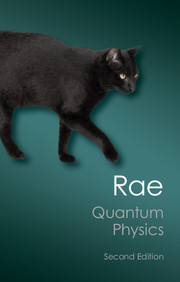Book contents
- Frontmatter
- Dedication
- Contents
- Preface to the first edition
- Preface to the second edition
- 1 Quantum physics
- 2 Which way are the photons pointing?
- 3 What can be hidden in a pair of photons?
- 4 Wonderful Copenhagen?
- 5 Is it all in the mind?
- 6 Many worlds
- 7 Is it a matter of size?
- 8 Backwards and forwards
- 9 Only one way forward?
- 10 Can we be consistent?
- 11 Illusion or reality?
- Further reading
- Index
- Frontmatter
- Dedication
- Contents
- Preface to the first edition
- Preface to the second edition
- 1 Quantum physics
- 2 Which way are the photons pointing?
- 3 What can be hidden in a pair of photons?
- 4 Wonderful Copenhagen?
- 5 Is it all in the mind?
- 6 Many worlds
- 7 Is it a matter of size?
- 8 Backwards and forwards
- 9 Only one way forward?
- 10 Can we be consistent?
- 11 Illusion or reality?
- Further reading
- Index
Summary
A completely different interpretation of the measurement problem, one which many professional scientists have found attractive if only because of its mathematical elegance, was first suggested by Hugh Everett III in 1957 and is known variously as the ‘relative state’, ‘many-worlds’ or ‘branching-universe’ interpretation. This viewpoint gives no special role to the conscious mind and to this extent the theory is completely objective, but we shall see that many of its other consequences are in their own way just as revolutionary as those discussed in the previous chapter.
The essence of the many-worlds interpretation can be illustrated by again considering the example of the 45° polarised photon approaching the H/V detector. Remember what we demonstrated in Chapters 2 and 4: from the wave point of view a 45° polarised light wave is equivalent to a superposition of a horizontally polarised wave and a vertically polarised wave. If we were able to think purely in terms of waves, the effect of the H/V polariser on the 45° polarised wave would be simply to split the wave into these two components. These would then travel through the H and V channels respectively, half the original intensity being detected in each. In contrast, photons cannot be split, but they can be considered to be in a superposition state until a measurement ‘collapses’ the system into one or other of its possible outcomes.
Information
- Type
- Chapter
- Information
- Quantum PhysicsIllusion or Reality?, pp. 75 - 87Publisher: Cambridge University PressPrint publication year: 2012
